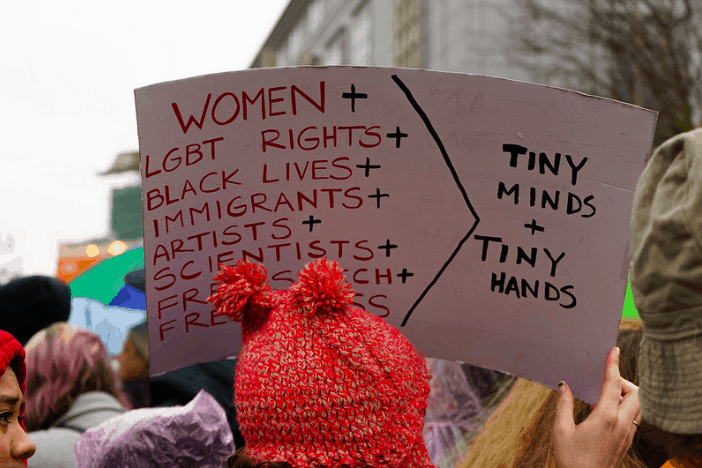Political protests have a deep past in U.S. history, with varied degrees of success in accomplishing what they set out to do. Gleaned from L.A. Kauffman’s eye-opening new book, How to Read a Protest: The Art of Organizing and Resistance, the following list highlights significant facts from U.S. protest past including two major history-changing moments—the 1963 March on Washington and the 2017 Women’s Marches—that both inspired new models for change.
-
The 1963 March on Washington, which drew 250,000 participants, was the first mass protest of its size in the country, an unprecedented collective action that hadn’t been tried in the United States before.
-
In 1932, the one sizable Washington protest before the 1963 March happened when 17,000 World War 1 veterans came to demand their bonus pay. President Hoover ordered police to evict them, and the Bonus Army demonstration ended in bloodshed.

Bonus Marchers, 1932 [Source: National Archives and Records Administration] -
In June 1963, 125,000 people gathered for the Detroit Walk to Freedom, an event that would help spur and solidify the DC March.
-
The signs at the 1963 March on Washington look uniform because the organizers took pains to ensure that only posters featuring authorized slogans would appear.

Demonstrators marching in the street holding signs during the March on Washington, 1963 [Source: Library of Congress] -
Women were sidelined from official roles and excluded from the decision making of the 1963 March, even though leaders like Ella Baker and Septima Clark were at the forefront of pioneering new approaches to organizing in that period.
-
Of the Civil Rights Movement, in 1966, Coretta Scott King said: “Women have been the ones who have made it possible for the movement to be a mass movement.”
-
The 1969 Vietnam Moratorium actions that involved some 2 million people around the country inspired Richard Nixon’s famous “silent majority” speech, in which he claimed that all the people not marching represented the true face of American democracy.

Demonstrator at the Vietnam Moratorium, 1969 [Source: Library of Congress] -
From March to May of 2006, 4 million or more people participated in strikes, walkouts, and major protests in 140+ cities for immigrant rights.
-
On January 21, 2017, at least 4.2 million people took to the streets in more than 650 coordinated Women’s Marches all around the United States.
-
Signs from the Women’s Marches were collected by numerous museums, such as the National Museum of American History and the Worcester Art Museum in Massachussetts to preserve as part of their collections.


